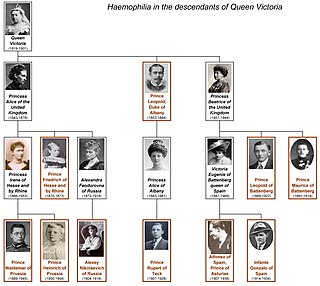
Haemophilia figured prominently in the history of European royalty in the 19th and 20th centuries. Britain's Queen Victoria, through two of her five daughters, Princess Alice and Princess Beatrice, passed the mutation to various royal houses across the continent, including the royal families of Spain, Germany and Russia. Victoria's son Prince Leopold, Duke of Albany, also suffered from the disease. For this reason, haemophilia was once popularly called "the royal disease". Tests on the remains of the Romanov imperial family show that the specific form of haemophilia passed down by Queen Victoria was probably the relatively rare Haemophilia B.

Prince Waldemar William Louis Frederick Victor of Prussia was the eldest son of Prince Henry of Prussia and his wife, Princess Irene of Hesse and by Rhine.

Leopold IV, Prince of Lippe was the final sovereign of the Principality of Lippe. Succeeding to the throne in 1905 he had been governing the state since 1904 as regent.

Ernst, Count of Lippe-Biesterfeld was the head of the Lippe-Biesterfeld line of the House of Lippe. From 1897 until his death he was the regent of the Principality of Lippe.
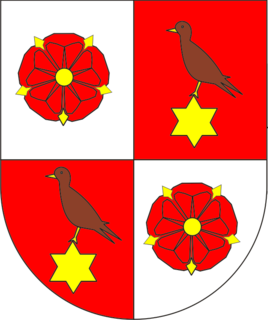
Lippe-Biesterfeld was a comital cadet line of the House of Lippe.

Princess Adelheid of Schaumburg-Lippe was a member of the House of Schaumburg-Lippe and a Princess of Schaumburg-Lippe by birth. Through her marriage to Friedrich, Duke of Schleswig-Holstein-Sonderburg-Glücksburg, Adelheid was a sister-in-law of Christian IX of Denmark and Duchess consort of Schleswig-Holstein-Sonderburg-Glücksburg from 14 October 1878 to 27 November 1885.
Ernst Casimir II of Ysenburg and Büdingen was the second Prince of Ysenburg and Büdingen. Ernst Casimir was the eldest son and second eldest child of Ernst Casimir I, 1st Prince of Ysenburg and Büdingen and his wife Countess Ferdinande of Erbach-Schönberg.
Princess Anna of Ysenburg and Büdingen was the youngest child of Bruno, 3rd Prince of Ysenburg and Büdingen and his wife, Countess Bertha of Castell-Rüdenhausen. Through her second marriage to Leopold IV, Prince of Lippe, Anna was the titular Princess consort of Lippe.

Princess Marie of Prussia, was a princess of the House of Hohenzollern. She was the daughter of Prince Frederick Charles of Prussia and later became second wife of Prince Henry of the Netherlands then the first wife of Prince Albert of Saxe-Altenburg. She was also the great-niece of Wilhelm I, German Emperor.

Lippe-Weissenfeld is one of the junior branches of the House of Lippe, a dynasty ruling the Principality of Lippe until the German Revolution of 1918–19.

Princess Adelaide "Adi" of Saxe-Meiningen was a daughter of Prince Frederick John of Saxe-Meiningen and his wife Countess Adelaide of Lippe-Biesterfeld.
Princess Elisabeth of Waldeck and Pyrmont was the youngest daughter of George Victor, Prince of Waldeck and Pyrmont and wife of Alexander, 2nd Prince of Erbach-Schönberg.
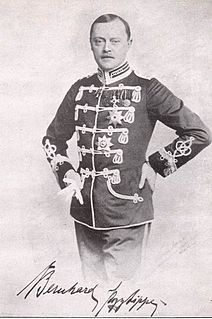
Prince Bernhard of Lippe was a member of the Lippe-Biesterfeld line of the House of Lippe. He is most notable for being the father of Prince Bernhard of Lippe-Biesterfeld, the prince consort of Queen Juliana of the Netherlands.
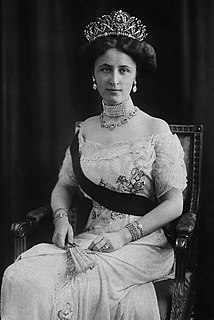
Princess Feodora of Saxe-Meiningen was the eldest child of Prince Friedrich Johann of Saxe-Meiningen, a younger son of Georg II, Duke of Saxe-Meiningen, and Countess Adelaide of Lippe-Biesterfeld, a daughter of Ernst, Count of Lippe-Biesterfeld. By marriage, she was known as Grand Duchess of Saxe-Weimar-Eisenach.

Princess Ida Matilda Adelaide of Schaumburg-Lippe was the consort of Heinrich XXII, Prince Reuss of Greiz from 1872 until her death. She was the mother of Hermine Reuss of Greiz, second wife of Wilhelm II, the last German Emperor.
Princess Marie Adelheid of Lippe was a socialite and author who was active in Nazi Germany. As the wife of Hanno Konopath, a prominent Nazi official, Marie Adelheid was a well known and ardent supporter of the Nazi regime. She was instrumental in the Nordic Ring, a forum for the discussion of issues concerning race and eugenics.

Princess Adelaide of Schaumburg-Lippe was daughter of Prince William of Schaumburg-Lippe and consort of the last reigning Duke of Saxe-Altenburg Ernst II.

Baroness Armgard von Cramm was the mother of Prince Bernhard of Lippe-Biesterfeld, Prince consort of Queen Juliana of the Netherlands.

Julius, Count of Lippe-Biesterfeld was Count of Lippe-Biesterfeld from 1840 to 1884 and father of Ernest II, regent of the Principality of Lippe. He is an ancestor of King Willem-Alexander of the Netherlands.
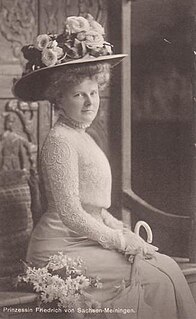
Countess Adelaide of Lippe-Biesterfeld was the eldest child of Ernest II, Count of Lippe-Biesterfeld and Countess Karoline of Wartensleben.















